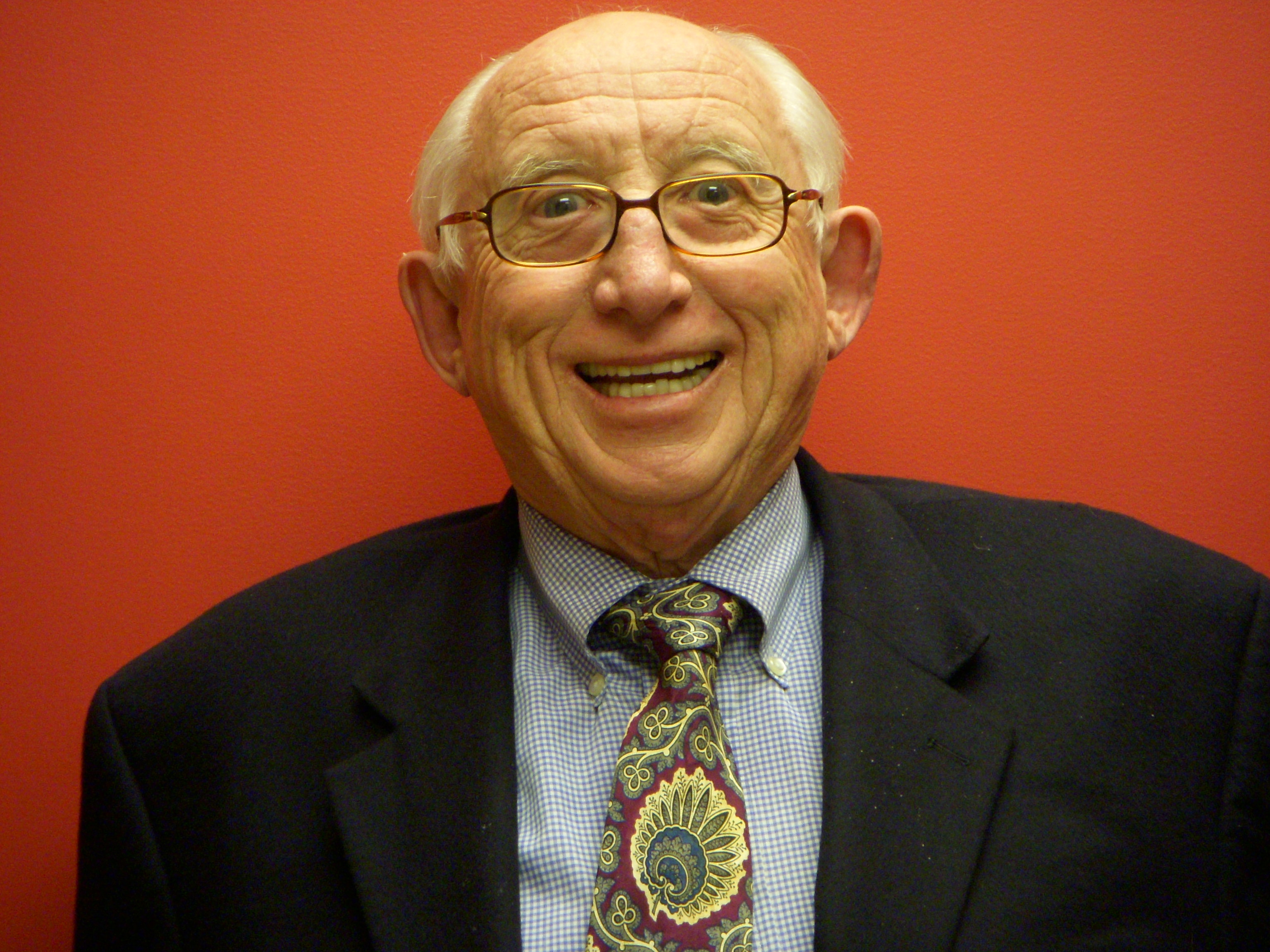Getting a Seat at the Table

News Analysis With a Sense of Humor




In the end, as so often, it all came down to one person. In this case Chief Justice John Roberts. He sided with the liberals enough to save the basic provisions of the Affordable Care Act.
In the tumult the wailing and the sighing, the gentlest of gentle sighs, inaudible to all but those who know, comes from the permanently sick, just-alive people who suffer from the immune system disease known as Chronic Fatigue Syndrome, called Myalgic Encephalomyelitis in much of the world. This is a disease little understood and under-researched, which it is believed afflicts 1 million Americans.
It is a disease that has no mercy. It is almost without exception a life sentence, robbing the victim of normalcy. Its symptoms include total collapse after exertion, especially after exercise; sleep that does not refresh; periods of months or years of being bedridden with pain from bones “that feel as though they are exploding,” according one victim, Lynda Haight; and a mental fog that makes the simplest task, like paying bills, too difficult many days. Other symptoms include extreme sensitivity to light, noise and normal city and suburban noise.
To this community of the lost, this cohort of hopelessness, Obamacare is a blessing; a small blessing but one that may grow in time when a cure is found, or at least when a therapy which relieves the suffering is developed.
These are the very people — sick, voiceless and hidden in in plain view – who have been shunned by insurance companies.
Those patients who contracted the disease in childhood have never been able to get insurance. They are the quintessential preexisting condition demographic. No room at Hippocrates Inn for them, even if they can afford it. Others have been dropped when they reach lifetime limits embedded in many policies.
Sadly, most of the expenses of those living this zombie life spend money not on being cured but being tested and using off-label drugs (drugs that are used for a purpose other than that for which they have been certified) in an endless search for partial, temporary relief.
Marly Silverman, a patient activist and director of PANDORA, a coalition of Chronic Fatigue Syndrome groups, said that had the Supreme Court decided otherwise, patients with chronic disease would have been forced back to uninsurable limbo.
For now, the apparent saving of Obamacare is a mercy for all the lifetime diseases. But it has a particular meaning for CFS sufferers because there is no easy diagnosis of the disease, and the patients often look quite well. It is a cruel irony that many CFS patients do not show signs ofbeing sick, so they are accused of sloth and malingering when they are as sick as can be.
Which is where the power of one comes in.
Women tell stories about devoted husbands — maybe the most famous being author Laura Hillenbrand’s. Also there are loyal wives who take up the burden, as in the case of Courtney Miller of Nevada, who is crusading for recognition for the disease that afflicts her husband Robert.
In other cases, lovers and spouses have taken the exits, leaving the prostrate to the additional suffering of loneliness and often poverty. Some sufferers are among the homeless. There many cases of victims living in cars and getting scant recognition or help from either the SocialSecurity Administration or doctors who take Medicaid patients.
John Roberts has become an important person in some very sad lives. For now he is the “one.”— For the Hearst-New York Times Syndicate

What's in a name? A great deal, if you suffer from one of the most awful long-term diseases that is widespread: chronic fatigue syndrome.
That name infuriates the patients, maybe 1 million in the United States and 17 million worldwide. It also infuriates the small but dedicated cadre of doctors and researchers who have made the disease and its casualties their concern.
The Centers for Disease Control (CDC) in Atlanta picked the CFS moniker in 1988, although the term myalgic encephalomyelitis (M.E.) is still in use in Europe and elsewhere, and is favored by patients.
The new name fast became despised because “it trivializes the disease and misleads people,” in the words of Leonard Jason, professor of psychology at DePaul University in Chicago. Certainly it brings to mind chronic whiners and everyone's everyday fatigue.
Part of the misleading, as Jason and numerous other medical professionals have claimed, is that the name has allowed governments and psychiatrists, especially in Britain, to sweep a plethora of psychological diagnoses into the tent. This, it is alleged, obscures the central unsolved mystery of CFC and its AIDS-like misery. And it hugely diverts government funding away from serious biomedical research. Jason and his colleagues believe that the most promising lines of investigation — pathogens, including a retrovirus called XMRV — are being under-researched in the process.
Although it has been around for centuries, and variously labeled, the modern concern with the disease dates to a major outbreak at London's Royal Free Hospital in 1955. That outbreak was big enough — nearly 300 — to worry public-health officials.
Its appearance in a cluster at the hospital suggested that it was contagious. Then, as now, there was no treatment and no clue as to the path of the contagion: Was it airborne or food-borne? How about contaminated surfaces? Were bodily fluids involved? Was there a genetic link?
None of those questions have been answered. What is known is that the disease appears in clusters and, more often, in isolated cases. It has spread in families, making it frightening; but the spread is occasional, not automatic.
The next major event to get the attention of health professionals was in Nevada at Incline Village, a resort on Lake Tahoe, in 1985. At over 300 cases, it proved too big to ignore, finally attracting attention from the CDC as well as state public-health authorities.
The CDC sent two young epidemiologists to investigate the outbreak—Gary Holmes and Jon Kaplan. They estimated sufferers at perhaps 20,000 throughout the United States, a majority women of whom were women.
In the same year, a second outbreak occurred in Lyndonville, a farming and manufacturing village in the northwest corner of New York state, with 216 cases out of a population of fewer than 900. Lyndonville only had one doctor, David Bell. He has followed the disease's progress tirelessly, becoming somewhat of a Nelson Mandela in the field.
Over the years, the disease kept on popping up around the country, attracting distinguished researchers in its wake. In 1987, Harvard Medical School professor Dr. Anthony Komaroff published a report about increasingly significant numbers in his Boston practice — the first evidence of what is now a quarter century of his CFS research. Dr. Nancy Klimas, an immunologist and AIDS expert at the University of Miami, found her clinic flooded with sufferers from the new disease and soon found their immune systems showed strange characteristics.
The numbers were clearly overflowing the CDC's estimate, but no one yet realized the extent.
Then entered Jason and his team of researchers at DePaul University. They studied the disease in society from a psychological point of view and found in 1990 that there were about 1 million sufferers in the United States.
They also found that the disease was caused by an unknown pathogen but was not psychological in nature, and that the cure rate was extremely low. Additionally, they and other researchers found that one of the prevailing symptoms was immune system suppression.
For most patients, CFS is a one-way ticket to hell. The affliction is acute and mostly incurable. Horrifically, it takes away even life's littlest pleasures.
According to many interviews and hundreds of e-mails I have received since first covering the disease, sufferers are hit first with symptoms of what seems to be flu. Sometimes there is a short, deceptive remission — sometimes two or three. Then the pattern emerges of collapse after every exertion, especially exercise. Finally, it is full onset: There are no more normal days, only different degrees of weakness, pain and other symptoms. Doctors term the disease relapsing and remitting. That means you might have weeks, months or years of slightly better days, and then stretches — often years, sometimes decades — of almost total helplessness. It is goodbye to the life you have known; to work, to hobbies, to lovers and spouses, to everything short of hope.
Deborah Waroff, a gifted New York author and securities analyst, is typical in the devastation of her life. Before Waroff was a skier, a sailor, a passionate squash and tennis player. Now the aloneness of the disease weighs her down. Very old friends — some from her days at Harvard, a few from childhood, a handful from work — sustain her with telephone calls, when she can answer the phone, and some come by. Nonetheless, the brutal loneliness is always there.
Waroff was first felled at the end of July 1989. Her engagement calendar grew full of forlorn cancellations for dinners, parties and meetings. One day in 1991, a bad headache arrived that lasted three days; after that, it came again and again.
Gradually, with help from a caring doctor, Waroff began to find medications and methods that would allow her to work a few hours a day. Pushing herself with sheer willpower to complete a chore would exaggerate her symptoms — more mixed-up speech, stumbles and almost falls, dizziness, rising fevers. Afterward, she would be immobilized for days.
Then things got worse.
In September 2003, Waroff woke up to find that she was too weak to fill out a simple form — just to renew library books – and fax it. That was the beginning of month after month of near-death incapacity. “I was as weak as you can imagine. I lay on the couch, its high back and sides making me think how much this was like being in a coffin, inert, my consciousness flattened by illness. I was too weak to read and often too weak to watch television. I would turn my back to the screen and let the sound wash over me, not taking it in.”
CFS, like AIDS, suppresses the immune system. Typical symptoms include tremendous fatigue that is unrelieved by sleep, as well as flare-ups of herpes- family diseases (like HHV-6 and Epstein-Barr), swelling of the lymph nodes, muscle ache and other pain, dysphasia (the inability to use the right words) and general cognitive failure, nausea and faintness.
Elisabeth Tova Bailey, once a professional gardener in Maine, was felled by CFS. Unable to leave her bed for more than a year, she filled her days by watching a single snail in a terrarium make its fascinating way though life.
When she was feeling somewhat better, Bailey studied the snail through the wonderful work of the 19th-century naturalists — that special breed of romantics who studied by watching, rather than by dissecting in the lab. The result is the well-reviewed and sweet book, “The Sound of a Wild Snail Eating.”
The most famous person to have CFS, and to have managed in great adversity to be productive, is Laura Hillenbrand who has over time written two incontrovertible bestsellers, “Seabiscuit: An American Legend” and “Unbroken: A World War II Story of Survival.”
Hillenbrand's achievement is Herculean. She seldom is able to leave her home in Washington, D.C. In a recent interview, she told the story of how she had to leave her own wedding because she was so sick.
Statistically two-thirds more women are afflicted than men. But I have heard from a lot of men, including a medical doctor and a young man, who was thrown out by his father who accused him of malingering, being lazy and not wanting to work. His plight is terrible, as is the plight of other people who do not have the intellectual capital or financial resources to do anything but suffer in isolation. Insurance companies drop coverage routinely, and many doctors misdiagnose or are influenced by psychiatric arguments.
Recovery, like that of DePaul's Leonard Jason, is rare. If it does not occur within the first two years, it is unlikely to occur at all. Usually only the young and well-supported socially are able to regain a good part of the health they once had.
The beacon of hope in this wasteland of human wreckage is a private institute in Reno, Nev. Affiliated with the University of Nevada, it is called The Whittemore Peterson Institute for Neuro-Immune Disease (WPI). It was founded and funded by Harvey Whittemore and his wife, Annette. Their 33-year-old daughter, Andrea Whittemore Goad, has been a CFS sufferer since she was 11.
The medical establishment has been cool to WPI; and NIH turned down all six research grant applications it made last year. But 1 million very sick Americans are cheering for this frontal attack on CFS, which they prefer to call M.E./CFS in deference to the older, less trivializing name.
While these things are argued, the life in limbo that so many endure is described by Waroff this way: “You know the trouble with this disease? All this time goes by with nothing in it. You don't get a chance to put anything in it. It's just empty time.”
Squabbling Experts, Suffering Patients
As with other investigative science, the search for a cure for chronic fatigue syndrome (CFS) is riddled with controversy, accusations and suspicion. The patient community believes, with seeming unanimity, that the medical institutions have failed them globally – namely America’s Centers for Disease Control (CDC) and the National Institutes of Health (NIH) and Britain’s National Health Service (NHS) They argue that the CDC discredited the disease, following the first big U.S. outbreak by giving it a misleading new name, chronic fatigue syndrome, and then shirking on research.
Among the alleged perfidy, the CDC first under-counted the number of U.S. sufferers at 20,000 and then over-counted them at 4 million. The count is crucial because when it was too low, resources were starved. And once it was set too high, test results became skewed because the CDC was including legions of clinically depressed people and others with psychological ailments, probably none of whom had CFS.
Nowhere is the counting more important than trying to establish whether it is the retrovirus XMRV that is the guilty pathogen in CFS. If the count is wrong and the patient cohort include people who have been misdiagnosed, the studies become a nonsense.
That is partially the case in Britain, where the NHS has been predisposed to treat CFS as a psychological disease and to dismiss studies which find XMRV in patients as contaminated, in particular by mouse DNA, which is present in the air of many laboratories that use mice in tests.
But the privately funded Whittemore Peterson Institute (WPI) in Reno, Nev. claims that they have never used mice and have guarded carefully against this possibility. Among the numerous test methods they used to thwart contamination, they hunted down antibodies to XMRV in patient blood, which cannot possibly have any connection to contamination. As WPI president Annette Whittemore points out, the real lab work includes finding genuine patients and extracting the elusive markers such as XMRV antibodies, making the work conclusive.
A recent article in the distinguished British medical journal, The Lancet, advocated cognitive therapy for CFS, such as improved diet and regular, paced exercise. The Internet lit up with denunciation. The consensus was that this was therapy for people who suffered from depression, not CFS.
The bottom line: This kind of commonsense therapy may help some, says Dr. David Bell, who has had more hands-on experience with CFS patients than any other medical professional, but it is not a cure or a breakthrough. What little is known is that different therapies work temporarily for different people: Deborah Waroff in New York has had some relief with ozone blood therapy; others, like Andrea Whittemore Goad in Reno, with Ampligen, an experimental drug; and still others with various immune-system boosters.
Those and other issues were debated at a NIH-sponsored conference, entitled “State of the Science,” on April 7-8. — Llewellyn King
This article was previously published by RealClearPolitics.

A new Web-based television program aims to shine a light on Chronic Fatigue Syndrome, sometimes referred to by patients as “the living death” disease. The disease also is known by its old name — and the one favored by many patients — myalgic encephalomyelitis.
The program is called “M.E./CFS Alert” and can be accessed on the You Tube Channel ME CFSAlert. The program will soon be accessible at www.whchronicle.com, the Web site of the weekly news and public affairs television program “White House Chronicle.”
The program was conceived by Llewellyn King, a Washington columnist and executive producer and host of “White House Chronicle” and Deborah Waroff, a New York writer and security analyst, who has suffered from the disease for 22 years.
“This is a terrible, debilitating and essentially lifelong disease which, like AIDS, suppresses the immune system. Our program has three objectives: to comfort the suffering; to change attitudes among physicians and medical institutions, and to implore the government to provide critically needed research funds,” Waroff said.
An estimated 1 million Americans are so severely impacted by the disease that for months and years they are house-bound. Worldwide some 17 million have lost the ability to lead normal lives and work.
Often those who have suffered total physical collapse are ostracized because of bigotry and ignorance. Institutions, like Britain's National Health Service, treat M.E./CFS as a psychiatric disease, even though patients are in great physical pain.
The disease knows no economic, geographic or social boundaries. Author Laura Hillenbrand is the best-known American victim.
“In more than 50 years of reporting, I've never experienced so many people so misunderstood and abandoned by society and many doctors. I've worked on three continents and reported from around the world, but never have I had a response like the one I've had from writing about M.E./CFS,” King said.
The first program is an interview with pioneering M.E./CFS doctor Derek Enlander.

In 2010, I made more friends than in all of my life. They are scattered across the United States and around the world. But for their sake, I wish they had never heard of me.
Sadly, my new friends know me only because I have taken up their cause. I have written and broadcast about their plight, and they have responded by pouring out their hearts to me.
For very minor service, I have received more gratitude, more praise and more life stories than from anything I have written or broadcast in five decades in journalism.
My sad, suffering new friends are victims of a grossly misnamed disease: chronic fatigue syndrome (CFS). It was once known more robustly as myalgic encephalomyelitis (ME), which at least suggests seriousness even if it isn't quite accurate. Myalgic describes pain in the joints and encephalomyelitis, inflammation in the brain and spinal cord. CFS has no known cure, and varies in intensity during the sufferer's lifetime.
In 1988, the Centers for Disease Control named the disease chronic fatigue syndrome after an outbreak in 1985 at the Incline Village resort on Lake Tahoe, Nev.
As far back as the 18th century there were recorded outbreaks of the disease, which was given various given names. In 1955, there was a major outbreak at the Royal Free Hospital in London.
The 300-case cluster in Nevada is generally recognized to be the largest in the United States. The second-largest cluster occurred in Lyndonville, NY, a northwestern hamlet where 216 cases were confirmed in a population of fewer than 1,000, also in l985.
A Lyndonville physician, David Bell, is regarded as one of the true experts on CFS, as well as one of the most dispassionate in the controversies that swirl around the disease. Bell has resisted pressure from both the medical establishment and patients' groups while retaining their respect.
As I see it, there are four controversies that plague discussion, research and therapies:
Is it a psychological disease with severe physical manifestations (a diagnosis favored by the British medical establishment)?
Is it caused by the new retrovirus XMRV (first spotted in prostate cancers) as some researchers believe, and nearly all the 1 million patients in the United States pray will lead to a cure?
Some charge there is a conspiracy in the medical establishment to downplay CFS out of guilt over past indifference, or pressure from the psychiatric practitioners who are reluctant to surrender jurisdiction.
Others fear a threat to the general population — clusters confirm CFS is contagious. But the pathway of the pathogen (air, blood, sexual intercourse, surfaces, food) or how great the risk is unknown.
Thanks to the Harvey Whittemore family — daughter Andrea Whittemore Goad has been a CFS sufferer since childhood — some serious, privately-funded research is being done at the Whittemore Peterson Institute (WPI) in Reno, Nev.
It is from this institute that the most compelling evidence of a retroviral role in CFS has originated. But recently, it has been refuted by British scientists who claim there was contamination in the tests, skewing the results.
Dr. Judith Mikovits of WPI rejects the British conclusions of contamination. She is very confident that she has found XMRV present in a majority of CFS patients, contending that she has used four methods of analysis against one in Britain.
Bell, the hands-on doctor from New York, told me he believes the virus is present. Yet only when XMRV is irrefutably proven to be to blame can the search for a cure take shape.
These are among issues that will be discussed on April 6-7 at a “state of the science” meeting at the National Institutes of Health in Bethesda, Md. But there is no expectation that anything very new will be revealed as the debate rages daily on the Internet.
Deborah Waroff, a gifted New York City author, former securities analyst and CFS sufferer for 22 years, tells the story of her first attack this way: “I have no idea how I got it. I had the symptoms of flu. After a week, thinking I was pretty well, I went back to my normal activities like biking and tennis. Then after a week, I was sick again. This repeated several times that summer [1989], until I got to a point where I was never well again. After a little activity, I would collapse, fold up.” Often, Waroff is bedridden, and nothing has improved permanently.
Her symptoms were classic; fever, dizziness, stomach upset, swollen lymph glands and frequent headaches. She developed cognitive problems such as putting the wrong words in sentences, known as dysphasia.
Waroff introduced me to my new friends and their terrible witness to suffering, abandonment and medical indifference. Their families break up, their spouses and lovers drift off. Infected parents worry for their children. One correspondent told me that they are the “unburied dead.” Others said they were “living in coffins.”
They have no celebrity spokesperson. They have no Washington lobby fighting for research dollars. They have no hope that a cure is just around the corner; and little confidence that government research organizations are trying hard enough, if at all, to find one. To know them is to peer into hell. — For the Hearst-New York Times Syndicate

“There have been some medical schools in which somewhere along the assembly line, a faculty member has informed the students, not so much by what he said but by what he did, that there is an intimate relation between curing and caring.”
So remarked Ashley Montague, the British-American anthropologist and humanist.
The millions who suffer from what is termed Chronic Fatigue Syndrome in the United States, and Myalgic Encephalomyelitis in the rest of the world, await day that the medical establishment cares enough about the disease to cure it.
They await that day with an anxiousness that is unimaginable to those who have not been afflicted by the disease.
The two commentaries on CFS/ME that Llewellyn King wrote for the Hearst-New York Times Syndicate (and posted on this Web site) have elicited a terrible cry from the afflicted, including a woman who called herself “an unburied corpse.”
These cries called out for a special edition of “White House Chronicle” on CFS. That edition, featuring Deborah Waroff, a New York author, and Dr. Paul Plotz, a National Institutes of Health clinician scientist, first aired on television Oct. 8, 2010.
“I hope the television special and my syndicated columns push the National Institutes of Health and the Centers for Disease Control, and its political masters, to take action on this life-robbing disease,” said King, executive producer and host of “White House Chronicle.”
Here are some of the viewer responses to the CFS/ME special that we have received so far:
From: Terry
Thank you so much for your broadcast featuring ME/CFS.
I am a Canadian ME/CFS patient who has suffered from this disease for over 12 years. I am involved in research looking to see if there is a connection between the newly discovered XMRV retrovirus and neuropsychiatric disease in my child. The thought is XMRV may have been passed onto my child by me and played a role in expression of her condition.
I am waiting for general XMRV research to learn if the retrovirus played a role in cancer I was diagnosed with four years ago as well. I am wondering if I will develop other cancers and wait anxiously to learn more about ME/CFS and cancer.
I would like to state here, in my experience, CFS/ME is not biologically benign, and highlighting CFS/ME on your show is significant. Perhaps you may help move research forward and thank you in advance for this.
I am immensely appreciative, since as you can imagine, I am anxious for research to help my family understand our poor state of health.
I am a most grateful U.S. neighbor.
From: Melinda
I can’t thank you enough for the attention you have brought to ME/CFS suffers.
I have had to deal many times with the ignorance and intolerance towards this illness. It is such an isolating illness and it is well and truly about time that more attention is given to it.
It would be so much easier to deal with if we had understanding and support.
Again thank you!
From: Cheryl
Thank you so very much for your willingness and openness to bring new light to ME/CFS on your show.
We need you. We are desperate to have our voices heard. I can only tell you from my experience that no one would want to have this horrible, life-stealing illness.
I was a very active social worker and church and community volunteer before contracting a virus in 2004 that never went away. It took so long to get an accurate diagnosis that by the time that I did, I was completely bedbound, not being able to leave my home for weeks at a time.
I have to travel over 1,000 miles for medical care, since I am unable to find a doctor here that believes me.
In January of this year, I had to crawl out of my bed to fight breast cancer. With a compromised immune system, I worry about it coming back and not being strong enough for more treatments.
Cancer was a breeze compared to the battles of ME/CFS–and I do not say that flippantly.
Please continue to bring this horrible illness and the injustices to the public. It is a crime against humanity to be made to suffer like this with no answers.
God bless you, Mr. King.
From: Karen
How is “epidemic” defined at the White House?
When is National XMRV Testing Day?
How much longer do you think I can hold out before Chronic Fatigue Syndrome induced dysautonomia shuts down a vital central nervous system?

In the end, as with so much else, the fight against disease leads to Washington. There are big diseases with big lobbies, like AIDS, Alzheimer’s, cancer, diabetes and heart. Their millions of sufferers have associations and lobbies to push for federal research money and to shape its expenditure. Most have their celebrity backers, like Elizabeth Taylor for AIDS, Jerry Lewis for muscular dystrophy, and Mary Tyler Moore for diabetes.
Big lobbies mean big federal dollars, the attention of the National Institutes of Health in Bethesda, Md., and the Centers for Disease Control in Atlanta. If the disease is the kind for which a single or series of silver bullets can produce a cure, Big Pharma comes in with big funding, in the hope that it can develop a lucrative line of medicines, patentable for long-term profits.
Yet there is a vast archipelago of diseases as cruel in their impact, horrible to bear and crying out for research that is not sporadic, underfunded or, through ignorance, misdirected.
One such is Chronic Fatigue Syndrome (CFS), a name so gentle that it belies the ghastliness of this affliction. Sufferers accuse the U.S. government, abetted by other governments, of choosing this name over the older and more commanding name, myalgic encephalomyelitis.
CFS is not about a name game. It is about debilitation lasting decades, essentially from inception to death. It is about years of lost living, terrible joint pain and total collapse, as the immune system more or less shuts down. It is like some great constricting snake that denies its victims the final convulsion.
Enter Sen. Harry Reid (D-Nev.). While he is not generally regarded as a man on a horse these days, to CFS sufferers he is a figure of hope. He has stood up for CFS research.
This is not because the Senate majority leader sought to know a lot about a hard-to-understand and terrible affliction, but because CFS was found in two clusters in his home state. The largest outbreak was at Incline Village, Nev. In New York state, there is a cluster too.
In the 1980s government scientists looked at these clusters, but refused to accord them the respect the suffering deserves. It was then that the name was changed; “fatigue” was less politically incendiary than myalgic encephalomyelitis.
Incline Village is significant because it shows that CFS is infectious, or that it has environmental causes. The thinking is that while clearly not having a strong transmission path, it does happen.
Recently a sufferer in England wrote to The Daily Mail, saying that her husband, who had cared for her for nearly 20 years, had become infected. This is particularly serious in England, where the medical establishment has insisted on treating the disease as a psychological disorder, despite recent research suggesting strongly that it is retrovirus XMRV.
Now, at last, two world-famous pathogen hunters, Anthony Fauci of NIH, previously seen as a debunker of CFS science, and Ian Lipkin, a celebrity pathogen hunter, are heading a major safari into the dark world of retroviruses.
For the first time, the loose global network of sufferers–nobody knows how many there are in the world, but in the United States there could be as many as 800,000—are beginning to apply political pressure.
Their plight is pitiable. The full horror of the disease is described in a paper by Deborah Waroff, a gifted New York writer who was stricken in July 1989. An energetic cyclist, skier, squash and tennis player, Waroff wrote in a paper for a Washington conference:
“My sickness began with a flu-like illness. After a week, thinking I was pretty much well, I went back to my ordinary activities, like tennis and my biking. A week later, I was sick again. This repeated several times that summer until I soon got to a point where I was never well again. I had classic symptoms. After a little activity I would just collapse, totally fold up. I also had symptoms like fevers, dizziness, upset tummy, swollen lymph glands and a new type of frequent headache. I had cognitive problems embarrassingly often, including dysphasia—putting the wrong words in sentences. I was often too weak to talk on the phone, or after five minutes of talking I would fold.”
In 2003, things got worse. But two years later, Waroff regained some of her life through the controversial treatment of ozone therapy. This treatment cannot be prescribed in most states. Allowed in New York, it is hard to come by and expensive. Some other countries, particularly Canada, have been more committed to fighting CFS and the use of ozone therapy.
Harry Reid, and others, there is more work to be done.